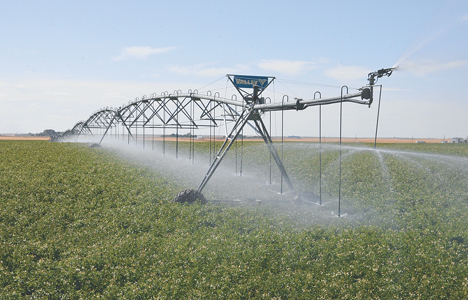Current Temperature
-19.7°C
Subsurface drip irrigation may represent the future
Posted on January 28, 2021 by admin WWN FILE PHOTO
WWN FILE PHOTOBy Tim Kalinowski
Southern Alberta Newspapers
Subsurface Drip Irrigation (SDI) may represent the future of irrigation for crops in southern Alberta, but a two-year trial conducted by Lethbridge College research associate Rezvan Karimi Dehkordi, who is a member of the college’s Mueller Applied Research in Irrigation team, shows it may have some ways yet to go before the technology can be adopted even more widely than it currently is by growers.
“SDI is used for fertigation — which is the mixing of nutrients with irrigation water,” she explains.
“By having that system, (growers) can spoon-feed the nutrients and water they are applying at exactly the same place we have the maximum root density of the crop. It’s kind of new in Alberta, and it is actually gaining popularity in Alberta, to improve wateruse efficiency. They can also increase their nutrientuse efficiency — specifically nitrogen.”
Essentially, instead of having a central pivot on an irrigated field, as is common in southern Alberta today, SDI piping is laid down 10 to 20 inches beneath the surface of the field and covered over by the topsoil. Small nozzles then release a mixture of fertilizer and water directly to the roots of the growing crop.
It’s cutting edge stuff with the potential to massively increase water-use efficiency for farmers, where it is adopted, says Dehkordi, but we don’t have much of a playbook for its effectiveness in this area of the country yet. That’s why these trials are necessary, she explains, to build up a database for local farmers to reference if they are thinking of expanding their use of the technology.
“All the information we have about SDI and the direct application of fertigation is from the United States — where it is used mostly on cotton, alfalfa and corn,” Dehkordi says. “Because it is kind of new for Canada and southern Alberta, we need to create a databank to see how SDI works in southern Alberta, and if a farmer uses SDI how they can increase their yield and (maximize) their nutrient-use efficiency.”
Dehkordi conducted a two-year field trial of SDI tech on a durum field in 2019, and on a pinto bean field in 2020.
In 2019, under dry conditions, the durum crop showed noticeable yield increases within the SDI crop compared to a non-SDI control crop, she says, but in 2020, with more precipitation falling, the pinto bean crop grown with SDI showed no noticeable differences in yield compared to a non-SDI control field.
Dehkordi speculates the excess precipitation, combined with the SDI application, led to greater foliage growth — but no increase in the amount or quality of the pinto beans. She also noted more mold grew on the SDI crop as well, because of the excess moisture. This highlights the importance of good irrigation management when using this technology, she says.
Despite the disappointing 2020 results, Dehkordi says the potential of the technology cannot be understated, and she will be conducting new trials in the coming year in a controlled greenhouse environment to really nail down the numbers.
SDI may be particularly important for the future of agriculture in southern Alberta with the limited water resources and short growing season we have in the region, she says.
In other words, a farmer maybe can’t get more water out (of) the overall irrigation system, but he or she can improve the efficiency of how they use the water resources they have. SDI is one way to potentially do that.
“With climate change and global warming, all over the world farmers, government and (agricultural) stakeholders are looking for good methods to store and increase their water-use efficiency and the efficiency with how they use nutrients,” Dehkordi says.
Leave a Reply
You must be logged in to post a comment.

